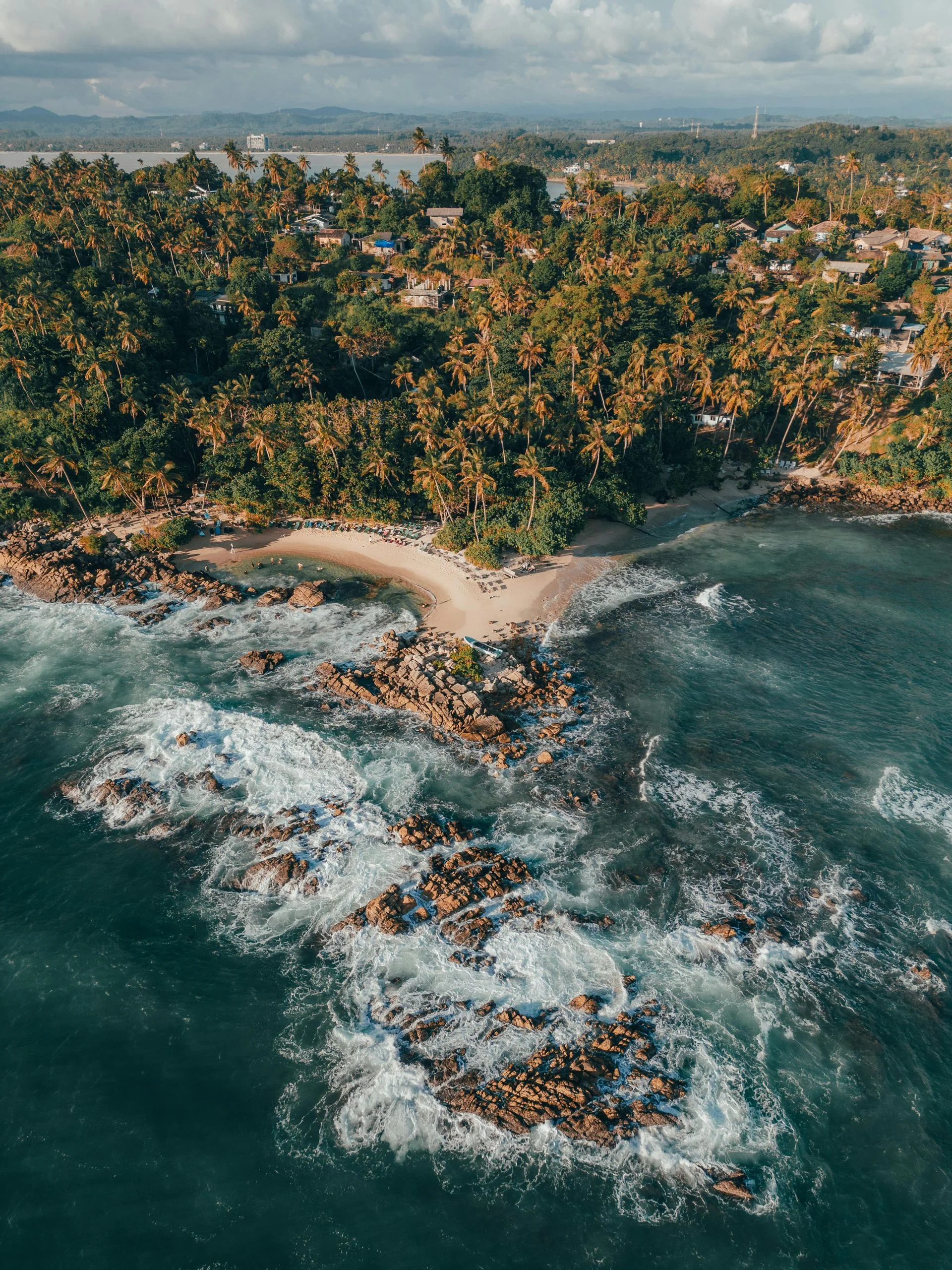Scuba Diving in Mirissa
The Ultimate Guide
Mirissa is a mellow fishing town on Sri Lanka’s south coast that doubles as a great base for easy reef diving. Its sheltered bay leads to a string of near‑shore sites where coral bommies and sandy patches host hawksbill turtles, oriental sweetlips, triggerfish and schools of fusiliers. Macro critters such as nudibranchs, octopus and pipefish hide among the rocks, while seasonal plankton blooms occasionally attract whale sharks. Calm conditions and shallow depths make Mirissa perfect for beginners and casual divers looking for warm, colourful waters without the crowds.
Difficulty
Easy
Temperature
27-30°C
Visibility
10-25m

Diving Highlights
Best Months to Dive
Getting to Mirissa for Diving
✈️Transportation
Fly into Colombo’s Bandaranaike International Airport (CMB) and travel south to Mirissa.
The drive via the Southern Expressway takes around 2½–3 hours by taxi, private transfer or bus.
Alternatively, take the coastal train to nearby Weligama and a short tuk‑tuk ride. Dive shops cluster around Mirissa harbour and the main beach.
Country
Sri Lanka
Currency
Sri Lankan Rupee
Electricity
230V, 50Hz, UK/Type G plug
Cost of a Dive Trip in Mirissa
Day Trip
Meal
Accommodation
Best Dive Sites in Mirissa
🐠Moray Point
A shallow reef just a 10‑minute boat ride from Mirissa harbour. Visibility is usually 10–15 m, with sandy patches dotted by coral heads. Hawksbill turtles, oriental sweetlips, titan triggerfish and several species of moray eel are common, and whale sharks occasionally pass through.
🐢Rock Wall
An 18–22 m sloping boulder reef covered in sponges, small corals and sea fans. Schools of snappers and fusiliers weave between the rocks while octopus and cuttlefish hide in crevices. Good visibility and relaxed currents make it an easy, scenic dive.
🦈Octopus Point
A remnant reef with a sandy bottom and scattered coral heads; depths range from 15–22 m. Macro photographers will love the nudibranchs, shrimps and other small critters that inhabit the rubble, and of course the namesake octopus.
🐙Aththalamba Point
A weather‑dependent site featuring rocky and limestone outcrops. Juvenile fish swarm around the rocks while groupers lurk in the shadows. Octopus and nudibranchs are also occasionally spotted.
🐚Yala Rock
A deeper site (18–24 m) with small caves and swim‑throughs. Pinnacles attract large schools of snappers and surgeonfish; lionfish and stonefish hide among the rocks. Visibility is average but the varied terrain makes it a fun dive.
What Divers Say About Diving in Mirissa
Earl Philip
Technical DiverMirissa is laid‑back and full of charm. You roll off a small boat into warm, green‑blue water and immediately spot hawksbill turtles and oriental sweetlips cruising over sandy patches. Moray eels peer from the reef, and on lucky days a whale shark glides by. The sites are shallow and perfect for beginners, yet there’s enough macro life—nudibranchs, octopus, pipefish—to keep photographers happy. Between dives you relax on the boat with fresh coconut and watch fishing boats go by. It feels like diving with family rather than a big operation.
Frequently Asked Questions About Diving in Mirissa
When is the best time to dive in Mirissa?
November through April offers calm seas and the clearest visibility. Off‑season months are still diveable, but the swell and wind can limit site access.
What marine life can I expect?
You’ll see hawksbill turtles, oriental sweetlips, moray eels, triggerfish, parrotfish and schools of fusiliers. Macro critters include nudibranchs, octopus and pipefish, and rare whale sharks appear occasionally.
Is Mirissa suitable for beginners?
Yes. Most sites are shallow with gentle currents, ideal for new divers and training dives. Certified divers can also enjoy deeper reefs under guidance.
How many dive sites are there?
Around six main sites—Moray Point, Rock Wall, Octopus Point, Aththalamba Point, Yala Rock and a few reefs near Weligama. Each offers different terrain and marine life.
Can I see whale sharks?
Whale shark sightings are rare but possible during the southwest monsoon (approximately December–April) when plankton blooms lure them close to shore.
What should I wear?
With water temperatures between 27–30 °C, a 3 mm shorty or rash guard is sufficient. Bring sun protection for the boat ride.
Are currents strong?
Currents are generally mild, making drift diving unnecessary. After storms, some surge may be present at deeper sites like Yala Rock.